相关推荐recommended
- [golang 微服务] 7. go-micro框架介绍,go-mic
- 关于NVM必坑指南
- 关于访问后端接口报404的问题——全网最详细的404错误详解
- SQL Server 中批量更新两个关联表的方法
- MYSQL 查询数据库中所有表中的数据量
- SpringBoot项目启动成功但接口访问404
- 内网穿透实现在外远程连接RabbitMQ服务
- 10个你需要知道的SpringBoot参数验证的技巧
- skywalking(一)skywalking部署及集成Springb
- @DateTimeFormat 和 @JsonFormat 注解详解
- SpringBoot整合mybatis-plus实现分页查询(建议收藏
- MS SQL Server 查看存储过程
- Rabbitmq 的管理配置
- pom文件中,mysql依赖报错:mysql:mysql-connec
- MySQL:多表查询(全面详解)
- 开发语言:ArkTS
- java 对接国标摄像头流程、代码整合 springboot SIP
- Go语言中的gin框架之【GETPOST】请求参数接收传值(五)
- Mysql用户创建以及权限赋予操作
- mysql 命令行启动显示“服务名无效”
- Centos6.5环境Nginx 1.16.1升级到1.24.0版本
- k8s部署ingress-nginx步骤
- 「MySQL-05」MySQL Workbench的下载和使用
- PHP之 连接MySql数据库
- mysql JDBC的三种查询(普通、流式、游标)
- MySQL 雪花Id函数
- 【Spring篇】AOP事务管理
- Android 获取网络连接状态新方法
- springboot集成Camunda审核流程(二):Camunda
- 【MySQL】一文带你了解MySQL中的子查询
【MySQL】一文带你了解表的增删改查 CRUD
作者:mmseoamin日期:2023-12-25
文章目录
- 1. 增加(Create)
- 1.1 单行插入 + 全列插入
- 1.2 多行插入 + 指定列插入
- 2. 查询(Retrieve)
- 2.1 全列查询
- 2.2 指定列查询
- 2.3 查询字段为表达式
- 2.4 别名
- 2.5 去重
- 2.6 排序
- 3. 条件查询(Where)
- 3.1比较运算符
- 3.2 逻辑运算符
- 3.3 举例
- 1. > <
- 2. and or 和 is null is not null
- 3. between ... and ...
- 4. in
- 5. like
- 4. 分页查询(limit)
- 5. 修改(Update)
- 6. 删除(Delete)
- 7. 总结
1. 增加(Create)
insert [into] table_name [(column [, column] …)] values (value_list) [, (value_list)] …
可能有点复杂,其实很简单,下面有分部的简单的解释。
1.1 单行插入 + 全列插入
-- 插入两条记录,value_list 数量必须和定义表的列的数量及顺序一致 insert books values('道诡异仙','狐尾的笔','259'); insert into books values('夜的命名术','会说话的肘子','239');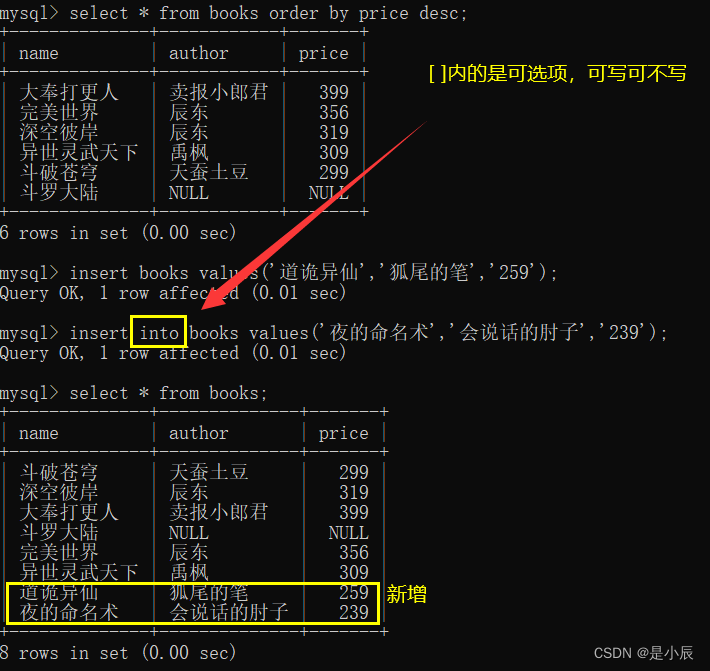
1.2 多行插入 + 指定列插入
-- 插入两条记录,value_list 数量必须和指定列数量及顺序一致 insert into books(name, author) values('诡秘之主','潜水的乌贼'),('牧神记','宅猪');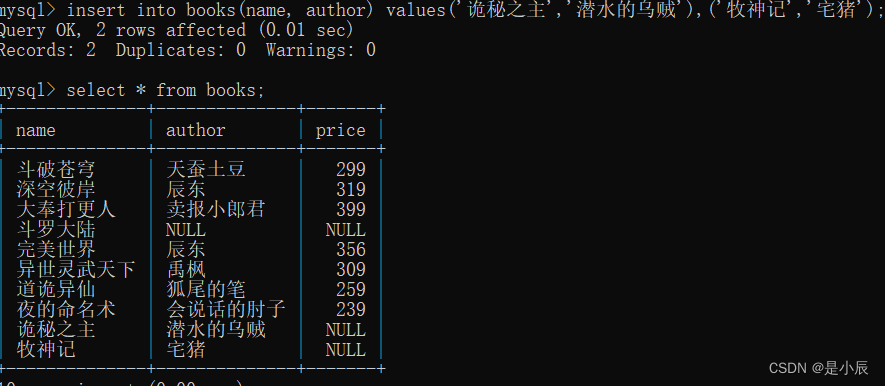
2. 查询(Retrieve)
语法
select [distinct] {* | column [, column] …} [from table_name] [where …] [order by column [asc | desc], …] limit …
2.1 全列查询
-- 谨慎使用 * 进行全列查询哦~ -- 1. 查询的列越多,意味着需要传输的数据量越大; -- 2. 可能会影响到索引的使用。 select * from books;
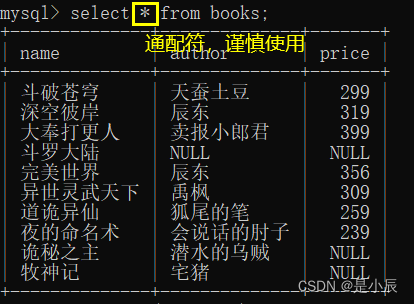
2.2 指定列查询
-- 指定列的顺序不需要按定义表的顺序来 select name, author from books;
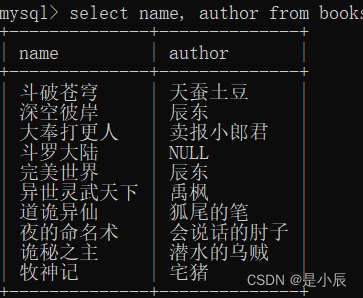
2.3 查询字段为表达式
-- 可以进行四则表达式 -- 更改的知识自己的客服端,当再一次查询的时候,仍为未运算时; select name, price + 10 from books;
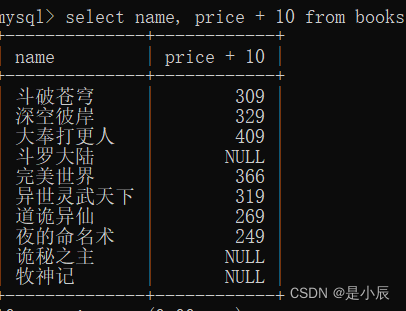
2.4 别名
语法
select column [as] alias_name […] from table_name;
-- 当运算后,表中名字会很怪,例如上图价格不在时price,而是price + 10 -- 这个时候我们就可以起个别名,让它变得简单 select name, price + 10 as up from books;
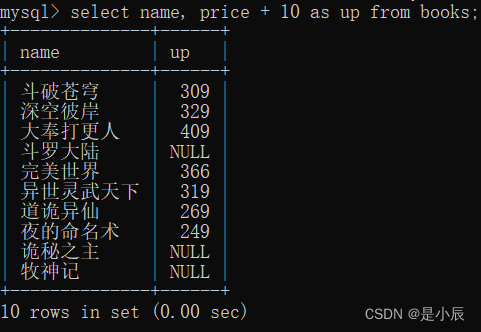
2.5 去重
语法
select distinct column from table_name;
select distinct author from books;
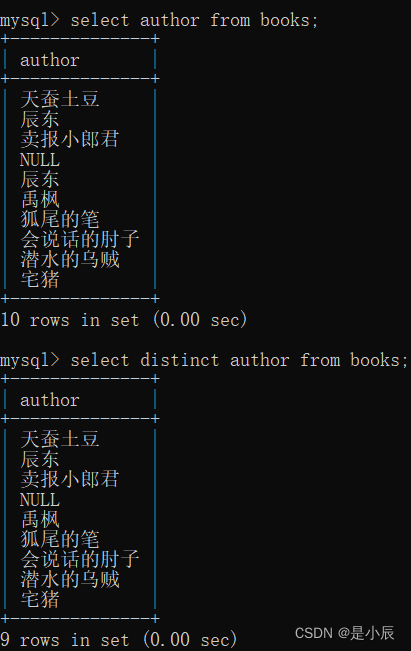
2.6 排序
语法
select … from table_name [where…] order by column [ASC|DESC], […];
-- 升序 select * from books order by price; --降序 select * from books order by price desc;
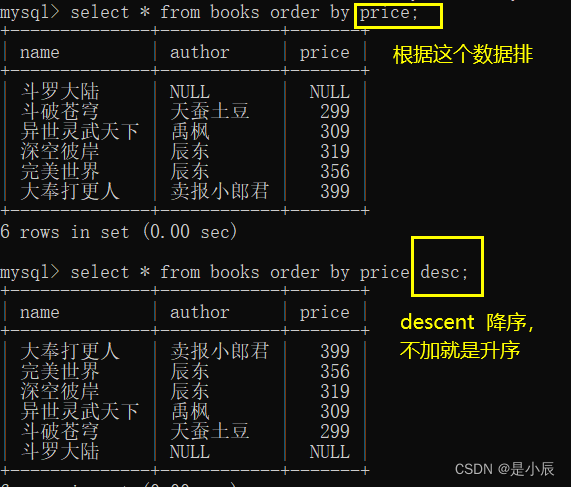
3. 条件查询(Where)
3.1比较运算符
运算符 说明 >, >=, <, <= 大于,大于等于,小于,小于等于 = 等于,null不安全,如:null = null 结果null <=> 等于,null安全,如:null = null 结果true(1) !=,<> 不等于 between a0 and a1 范围匹配,[a0, a1],如果 a0 <= value <= a1,返回 true(1) in(option …) 如果是 option 中的任意一个,返回 true(1) is null 是null is not null 不是null like 模糊匹配。% 表示任意多个(包括 0 个)任意字符;_ 表示任意一个字符 3.2 逻辑运算符
运算符 说明 and 多个条件必须都为 TRUE(1),结果才是 TRUE(1) or 任意一个条件为 TRUE(1), 结果为 TRUE(1) not 条件为 TRUE(1),结果为 FALSE(0) 3.3 举例
1. > <
-- 查询价格在300以上 select * from books where price > 300; -- 查询价格在300以下 select * from books where price < 300;
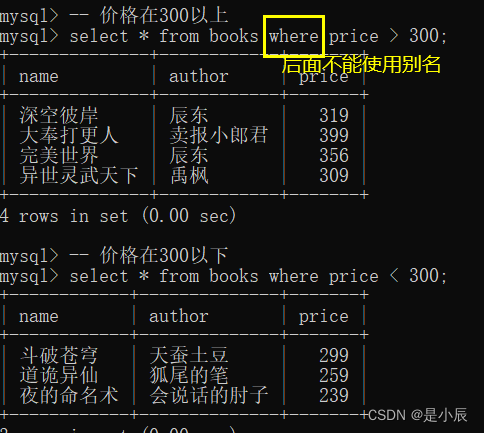 <" />
<" />2. and or 和 is null is not null
相当于&& ||
--查询作者是null并且价格为null select * from books where author is null and price is null; --查询作者是null或者价格不是null select * from books where author is null or price is not null;
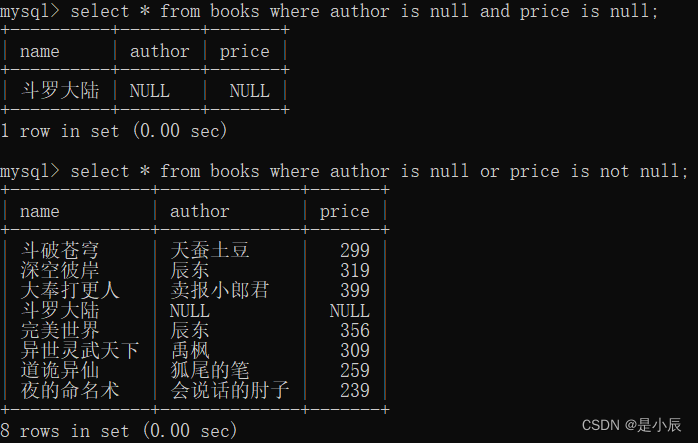
3. between … and …
-- 查询价格在280-320 select * from books where price between 280 and 320;

4. in
-- 查询价格是 299 或者 359 或者 398 或者 399 的书 select name, price from books where price in(299, 359, 398,399);

5. like
-- % 匹配任意多个(包括 0 个)字符 select name, price from books where price like '2%'; -- _ 匹配严格的一个任意字符 select name, price from books where price like '3_';
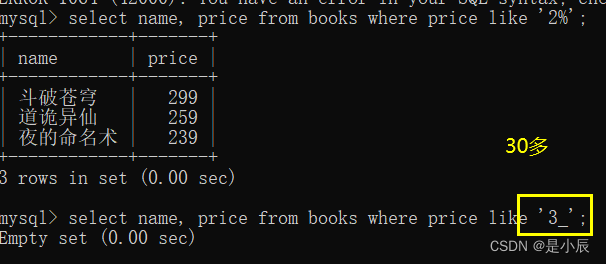
4. 分页查询(limit)
语法
-- 起始下标为 0 -- 从 0 开始,筛选 n 条结果 select ... from table_name [where ...] [order by ...] limit n; -- 从 s 开始,筛选 n 条结果 select ... from table_name [where ...] [order by ...] limit s, n; -- 从 s 开始,筛选 n 条结果,比第二种用法更明确,建议使用 select ... from table_name [where ...] [order by ...] limit n offset s;
-- 按价格分页,每页三条,分4页 -- 第一页 select * from books order by price limit 3 offset 3; -- 第二页 select * from books order by price limit 3 offset 3; -- 第三页 select * from books order by price limit 3 offset 6; -- 第四页 不足三个无影响 select * from books order by price limit 3 offset 9;
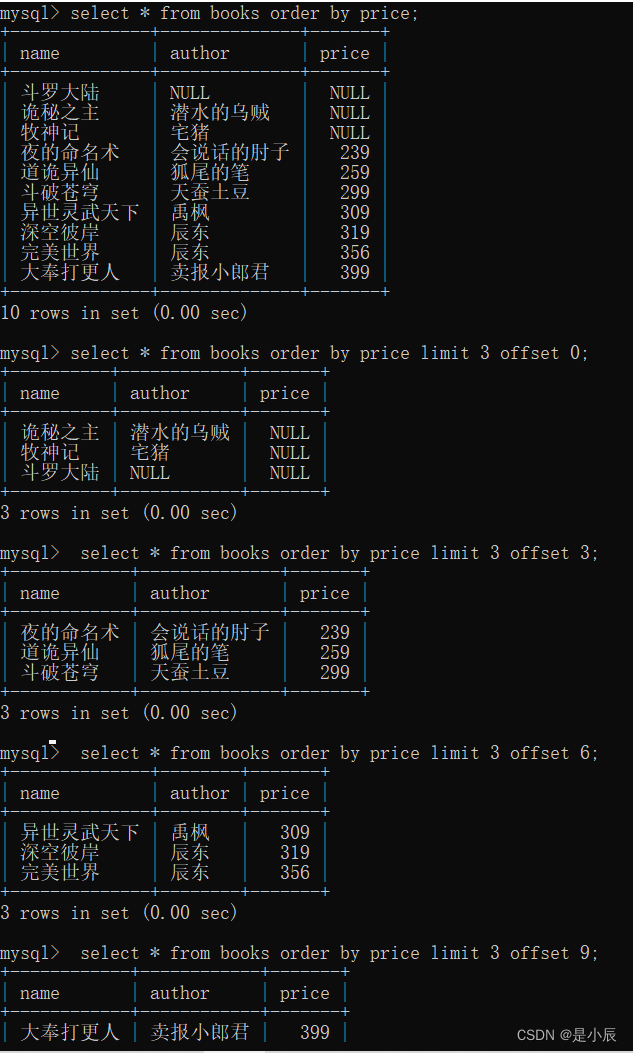
5. 修改(Update)
语法
update table_name set column = expr [, column = expr …] [where …] [order by …] [limit …]
-- 将斗罗大陆的作者改为唐家三少 update books set author = '唐家三少' where name = '斗罗大陆'; -- 将所有书降价10
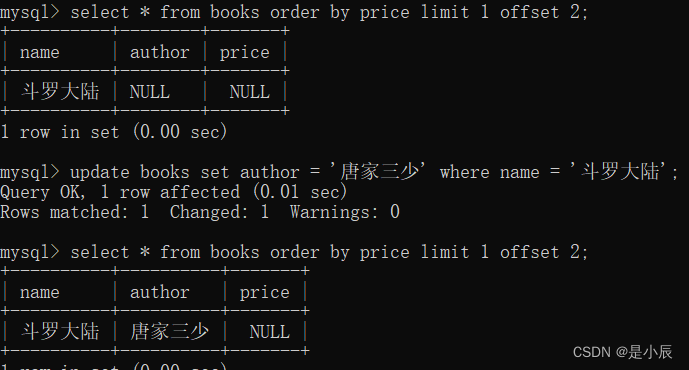
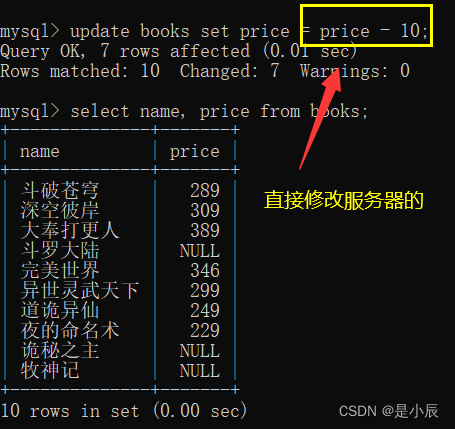
6. 删除(Delete)
语法
delete from table_name [where …] [order by …] [limit …]
-- 删除斗破苍穹 delete from books where name = '斗破苍穹'; -- 删除整表数据 --谨慎操作 delete from books; -- 但是表仍然存在 -- 删除整个表 drop table books;
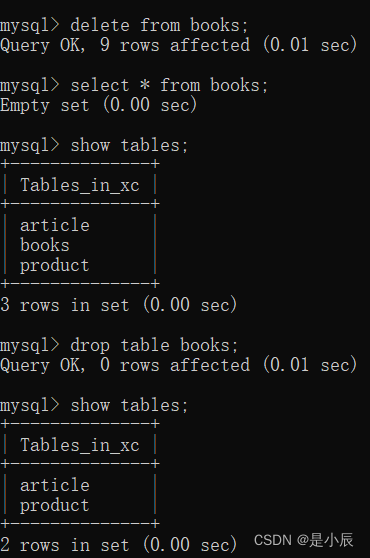
7. 总结
就是表的增删改查CRUD, 即增加(Create)、查询(Retrieve)、更新(Update)、删除(Delete)四个单词的首字母缩写。
这些属于基础的操作,下面还有更复杂的操作,我们下次见!
上一篇:dbeaver工具连接达梦数据库














